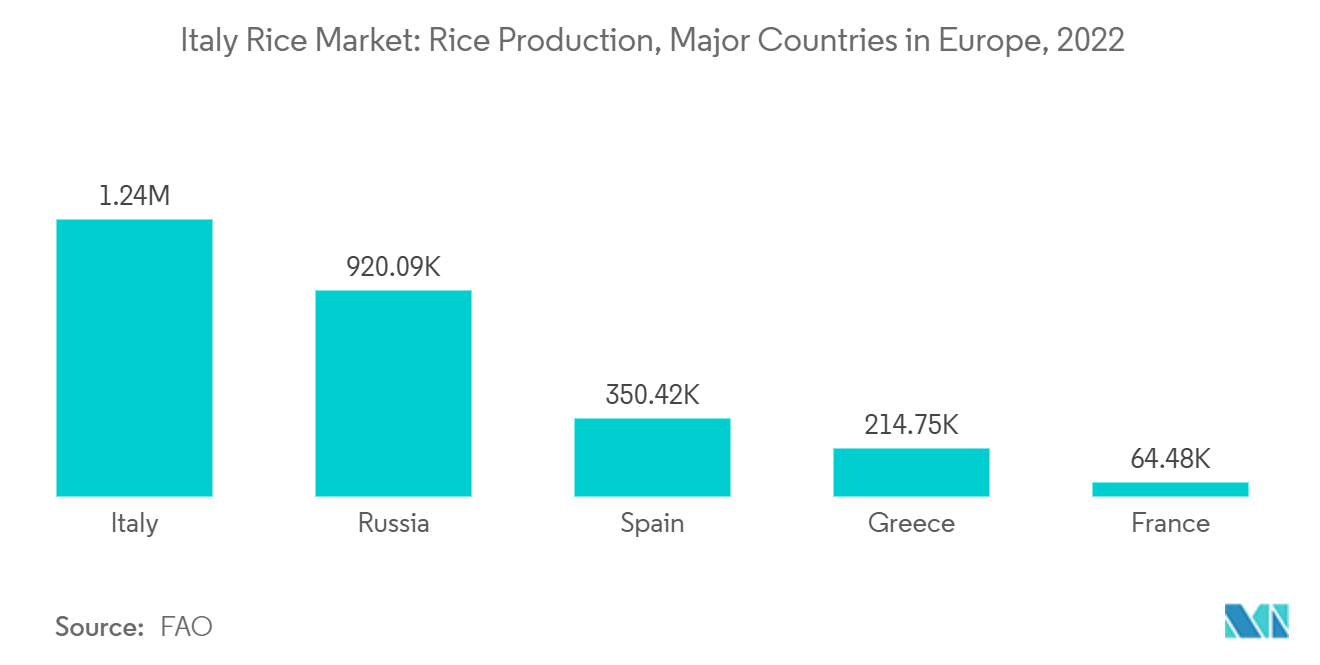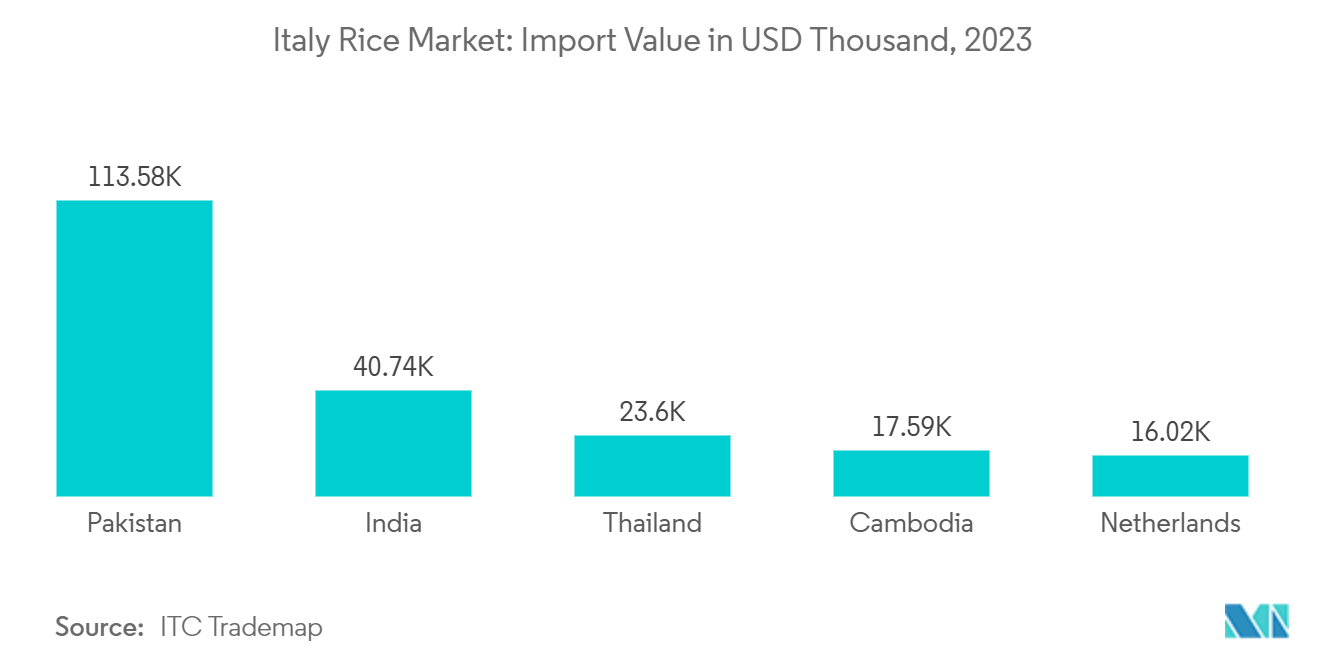Market Trends of Italy Rice Industry
Increasing Rice Production in the Country
In 2021, Italy emerged as Europe's top rice producer, contributing 40.5% to the continent's total production with a yield of 1.2 million metric tons. This output represents roughly half of the rice produced within the European Union. Approximately 40% of Italy's processed rice is allocated to premium varieties, notably risotto rice. These varieties are not only essential for traditional risotto dishes but are also innovatively used as gluten-free substitutes in baked goods and for sushi preparation. Such evolving culinary trends have bolstered national rice consumption, subsequently propelling domestic production. Beyond its production prowess, Italy stands as Europe's foremost rice exporter, accounting for 8.0% of exports in 2023.
Key destinations for Italian rice exports include Germany, France, the United Kingdom, and the Netherlands. Germany leads, capturing 22.5% (valued at USD 217.8 million) of the total export share. France closely trails with 21.6% (USD 209.3 million), while the United Kingdom and the Netherlands hold smaller portions at 7.9% (USD 76.9 million) and 6.2% (USD 59.8 million), respectively. In 2023, the volume of Italian rice exports constituted 30.5% of the global rice trade, underscoring Italy's pivotal role in the international rice arena. The rising demand from countries importing Italian rice underscores the market's significance, highlighting its vast economic potential.

Growing Imports of Long Grain Rice Varieties
In Italy, consumers are increasingly turning to specialty rice, driven by growing health and wellness concerns. Unlike regular milled white rice, specialty rice varieties offer higher vitamin and mineral content, promote better health, and are excellent sources of fiber. As a result, demand for these rice varieties is surging. Notably, higher-income groups are willing to pay a premium for these health benefits. Additionally, the demand for processed products, particularly packaged rice mixes, is expected to grow robustly, mirroring the rising appetite for prepared foods.
As per the ITC Trademap, Italy's rice import value surged to USD 355,487 thousand in 2022, up from USD 194,410 thousand in 2021. Basmati rice, known for its aromatic fragrance, has emerged as the favored specialty rice among many European consumers. A significant portion of imported husked rice, and the growth in imports, is dominated by basmati varieties. Notably, high-quality basmati rice can be aged for enhanced flavor before market sale. Italy's reliance on importing specialty rice underscores the significance of trade agreements and partnerships with Asian nations. Any disruptions or shifts in these trade relationships could profoundly affect Italy's food industry and its broader economy. Moreover, with a rising demand for sustainable and organic rice, domestic producers in Italy see an opportunity to challenge imports. Yet, high production costs in Italy, driven by labor and land expenses, pose a challenge in competing on price with imports from Asia. As the appetite for sustainable and organic rice grows, Italy's dependence on imports underscores the need for international trade partnerships and the hurdles of competing with more affordable producers.


